Not sure whether to use a swamp cooler or an air conditioner to handle the heat?
You’re not the only one. On the surface, it seems like they do the same job, but there are distinct advantages to each product. Read on to find out which suits your specific needs.
Let’s start with a quick overview.
Swamp Cooler vs Air Conditioner

Swamp Cooler
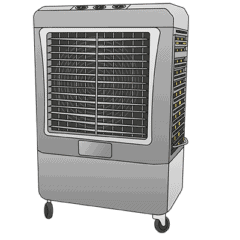
Air Conditioner
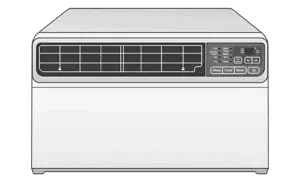
Pros
Swamp Cooler
Eco-friendly
Energy efficient
Cooler and humidifier
Air Conditioner
Temperature control
Some units offer heat too
Works in all environments
Cons
Swamp Cooler
Risk of mold
No temperature control
Not suitable for wet climates
Air Conditioner
Expensive
Drying at night
Higher energy usage
Best For
Swamp Cooler
Best for energy and eco-conscious users in dry climates
Air Conditioner
Best for wet climates and those who want precise control
What is a Swamp Cooler and How Does it Work?
A swamp cooler, also known as an evaporative cooler, provides an alternative way to regulate the temperature in your home. It’s often considered an eco-friendly and energy-efficient way to keep cool. However, it doesn’t work well in all situations. Understanding how the system works allows you to make an informed decision about whether this system is right for you.
Evaporative coolers are units with vents or grids. These porous surfaces allow the hot air to pass through them. They’re usually assisted by fans that draw the air in. From there, the system cools it and pushes it back out to lower the temperature. That’s not the only function, though, as it also adds humidity.
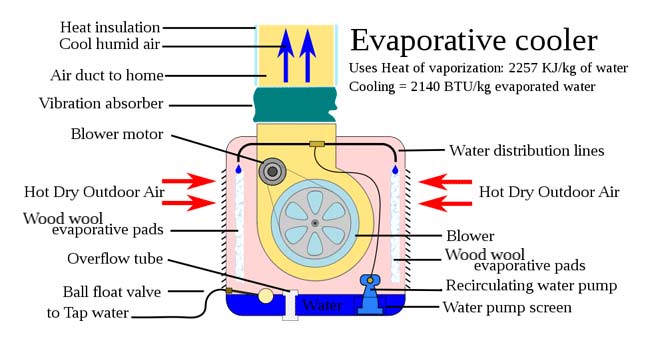
The cooling process works using pads of water that the air passes. The unit will have a tray of water that moves to the pads to keep them damp, which is usually done via a pump. As the hot air moves through the water or damp air, it cools, then it’s pushed back out into circulation, lowering the temperature in the room.
It’s a straightforward technology, which doesn’t rely on chemicals or many moving parts. As long as the air can move through the grids and the pads are kept damp, you can have cool air.
What is an Air Conditioner and How Does it Work?
Air conditioners come in many forms. It could be a system that covers the whole of your house or a portable or wall-mounted unit in your room. It’s a popular way to keep the temperature cool no matter what the weather is like outside.
The method of cooling in an air conditioning system differs from a swamp cooler, and it’s useful to know how it works to understand how it could meet your needs. The units use fans to draw in the air, which passes through to be cooled.
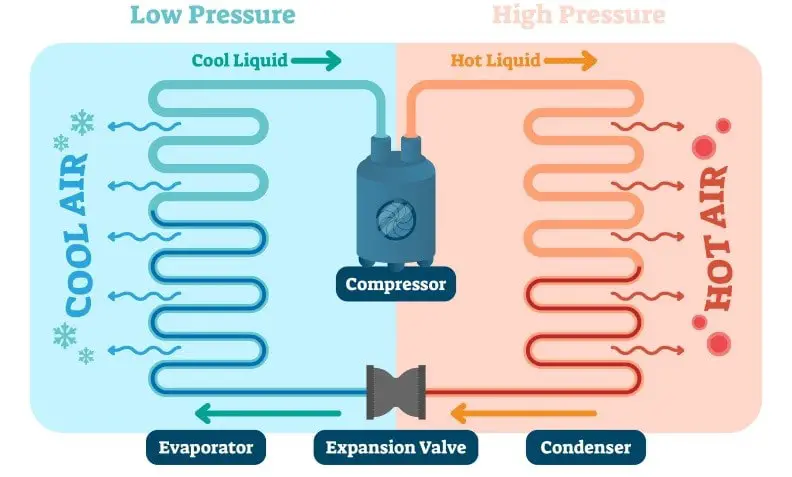
Coils filled with refrigerant, which is a chemical that absorbs heat, cool the air as it passes through the system. The refrigerant is heated; it then moves to the condenser unit, where the compressor heats it more, which encourages the heat to dissipate. A fan pushes the heat out through external vents, and the refrigerant is cool and ready to be used again.
It’s a complex process that involves two units; one to draw in the air and cool it, and another to push out hot air and make the refrigerant cool again. The process is reliant on fans, coils with refrigerant, and several vents.
Relevant Characteristics Between Swamp Cooler and Air Conditioner
Swamp Cooler vs. Air Conditioner
Compare by tapping or clicking below!

Cost
Swamp Cooler
$100 – $300
Air Conditioner
$300 -$3,000+
Air Quality
Swamp Cooler
Outdoor filtered
Air Conditioner
Indoor filtered
Cooling Capacity
Swamp Cooler
Fan speed only
Air Conditioner
Temperature control
Humidification
Swamp Cooler
Adds humidity
Air Conditioner
No control
Power Consumption
Swamp Cooler
Low energy
Air Conditioner
Medium to high energy
Portability
Swamp Cooler
Portable units available
Air Conditioner
Portable units available
Installation
Swamp Cooler
Easily installed on the roof
Air Conditioner
Many systems require ductwork
Maintenance
Swamp Cooler
Regular cleaning
Air Conditioner
Cleaning and filter replacement
Similarities and Differences
Having a basic understanding of how the two systems work is the first step. We’ll now set out what they’ve got in common and where they differ. Through this comparison, you’ll get a more detailed look at why one option might work better than the other in certain circumstances.
Swamp Cooler and Air Conditioner Differences
While both systems do a similar job, the way they achieve it is very different, and that has many consequences that are worth taking into account.
Cost
Since swamp coolers don’t involve chemicals or complicated moving parts, they’re a relatively budget-friendly option. The starting price for a basic unit could be under $100, whereas high-end products could range up to $300 or slightly more.
Air Conditioners, however, are quite expensive. They start from around $300, and more sophisticated systems cost thousands of dollars.

Humidity
A key difference between the two products is the ability to increase the humidity in your environment. Swamp coolers use water as the cooling method, which makes them natural humidifiers too.
Air conditioners don’t usually have the capacity for that. However, when considering swamp coolers, it means that they aren’t suited to already damp or humid environments.
Power Consumption
Once again, as evaporative coolers run with a simple fan and pump mechanism, they don’t require a lot of power. That makes them more energy-efficient than air conditioning units, which need to run the evaporative part, the compressor, and the fans.
Temperature Control
As air conditioners use a chemical to cool the air, there’s more choice for setting the temperature. On the other hand, swamp coolers use a natural means. While you can increase the fans to push more cool air around, you can’t set a specific temperature.
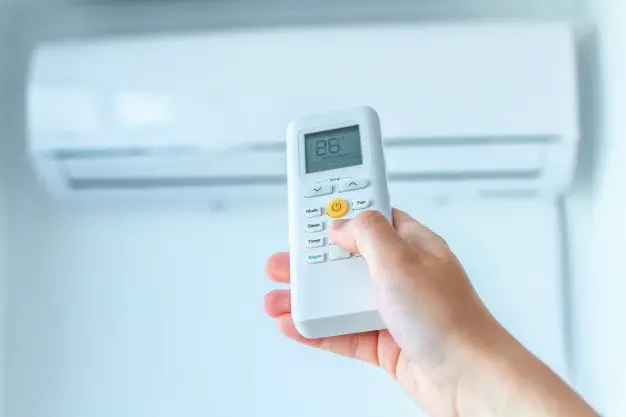
Eco Friendly
By using fans and water, swamp coolers have low energy consumption and a natural method for regulating the temperature. The benefit of that is that it has low carbon emissions and doesn’t require the manufacture and introduction of chemicals.
In contrast, air conditioners are usually bigger and more complex systems with two units and chemicals, which means more carbon emissions for producing and running them.
Swamp Cooler and Air Conditioner Similarities
Despite their differences, there are some close connections with how these two systems work. It’s important to acknowledge where they’re similar, as these might only play a small role in your decision-making process.
Air Quality
There’s a slight difference in how air conditioners and swamp coolers can affect your air quality. However, they both typically include filters that take pollutants and allergens out of the air. The main factor for you to consider is your existing environment.
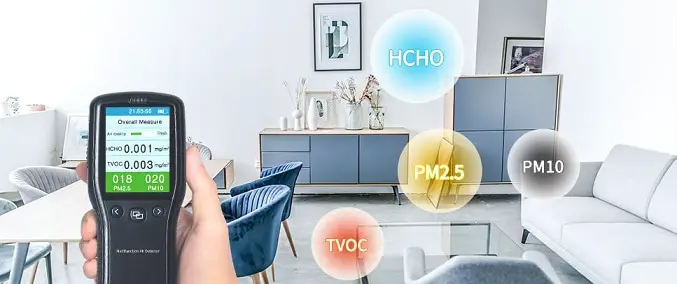
Swamp coolers draw outside air in, which can result in the fresh air, or issues if there’s a dust storm. Air conditioners use the air from inside your house, and if the quality is already bad or good, you won’t see a large difference.
Installation
Generally, swamp cooler installation is slightly easier. However, it’s challenging to make a direct comparison as it depends on your circumstances. For example, if you already have the ductwork set up in your house, then adding some air conditioning units is straightforward.
Portability
As with installation, this factor depends on the unit you purchase. Both swamp coolers and air conditioners come as standalone units. You can usually move those to any room that you need to use them in.
If you have roof-mounted or wall-mounted systems, which are available for both types, you’ll only be able to use them in those rooms or already feel the benefit throughout the whole property.

Maintenance
As swamp coolers use water but have simple parts, they don’t require a significant amount of maintenance. The pads and vents will need regular cleaning to prevent bacteria and mold growth.
Air conditioners also need regular cleaning, although mold won’t be an issue. You’ll need to clean or replace the filters, and an annual maintenance check could help extend the quality and life of the system.
Advantages and Disadvantages of Swamp Coolers
Now you understand how the evaporative cooling system works and how it compares to air conditioners. The next step is to look at the benefits or possible drawbacks, which will help you in your decision to purchase.
Natural Cooling System
One of the main strengths of swamp coolers is that they use a natural method of temperature regulation. This type of cooling has been used for hundreds, if not thousands, of years. It’s said that the Ancient Egyptians first used an early form of evaporative cooling.
Anyone concerned about their carbon footprint and the environment will be pleased to know that there’s an alternative to a chemical option that requires a complex system and more power. Plus, all you need is clean water, and you can use the unit.

Low Cost and Energy-Efficient
The natural system brings another advantage, which is that it doesn’t require a lot of power. Energy-efficient products like swamp coolers mean lower power bills and less demand in your household at any given time. Since the original purchase cost isn’t too expensive, your wallet will thank you either way.
Additional Benefits
Evaporative coolers tend to be quiet. There’s some noise from the fans, but as there isn’t a second unit cooling the refrigerant, it’s quieter than traditional air conditioners. Additionally, if you live in a dry environment, your system will do two jobs: cool your home and add moisture to the air to make it more comfortable.
Doesn’t Work in Every Environment
There’s a disadvantage to swamp coolers that could stop you from buying one. They’re best used in arid climates. They might still provide many benefits in a moderately dry area.
However, if you live somewhere that has humidity issues, you won’t want to add to that with the water in your temperature regulation system. Due to the potential for mold, these products might not be suitable for people with asthma.
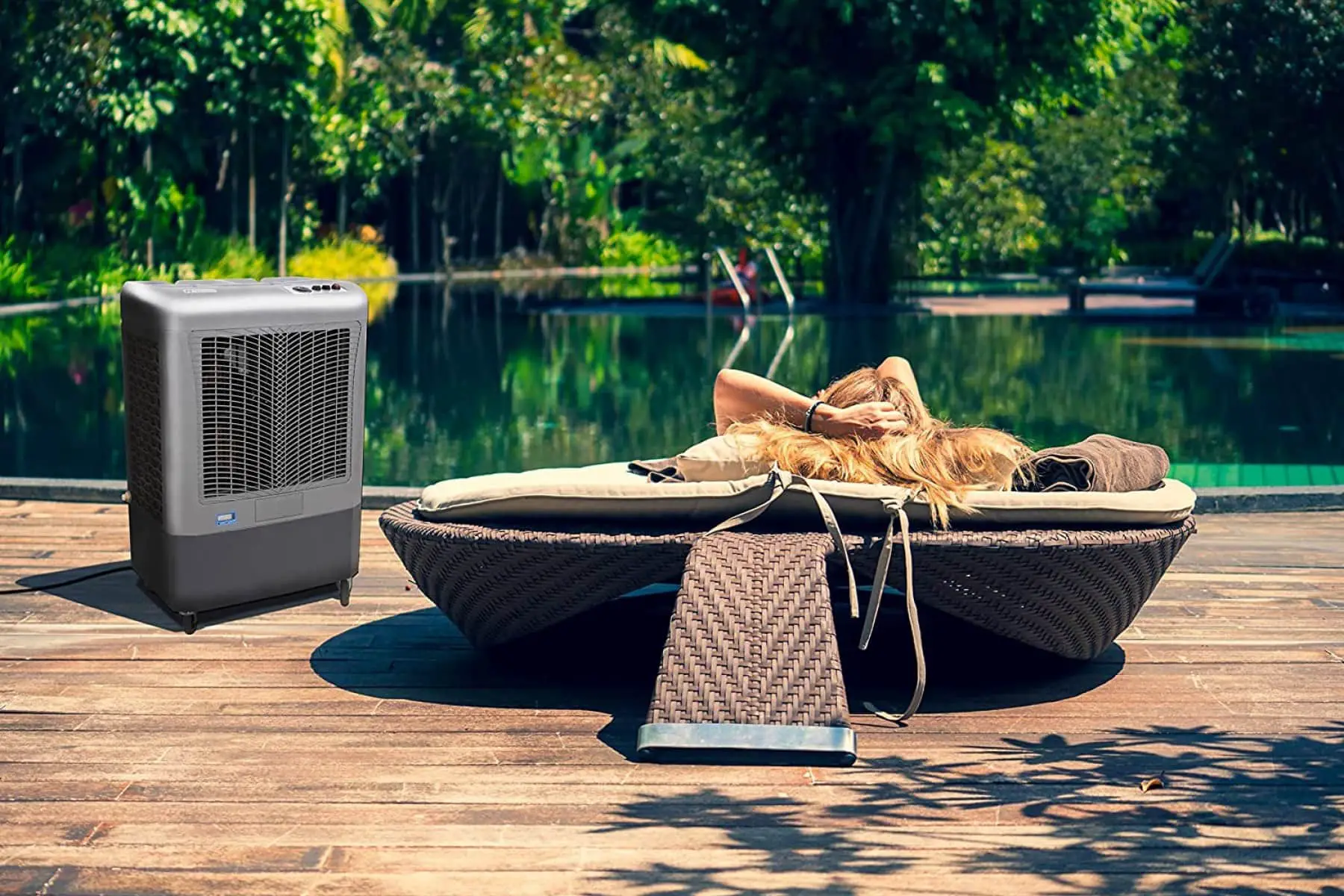
When and Why Would I Use a Swamp Cooler?
Here are three situations where a swamp cooler can provide some advantages.
Humidify and Cool in Hot, Arid Climates
If you live in a very dry area, you’ll want to make your home more comfortable with a humidifier. Instead of buying two products, you can deal with the heat and add some moisture to the air with one unit. A swamp cooler will regulate the temperature and increase the humidity.
Humidify and Cool in Moderate Climates
You don’t need to live in an extreme environment to benefit from an evaporative cooler. If you have a few hot or dry days, weeks, or months each year, you won’t need an expensive or complicated system.
Since the units are reasonably affordable and don’t require a large amount of energy, they’re a suitable option for occasional temperature and humidity regulation.
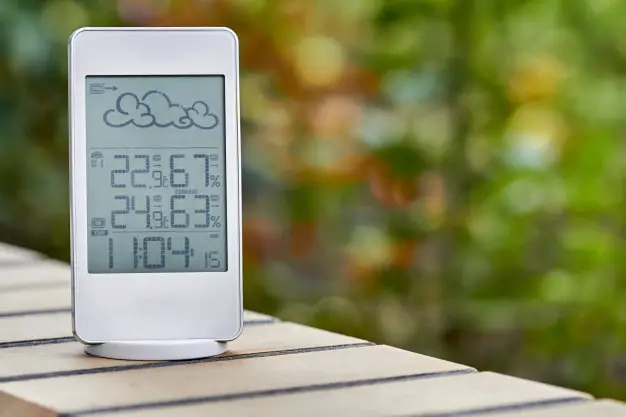
Reduce Energy Bills and Go Eco-Friendly
Anyone living in a dry or moderate climate that wants to manage their impact on the environment can get closer to that goal with a swamp cooler. Not only will you not need chemicals to run your system, but you won’t use a lot of energy, which reduces your carbon footprint.
At the same time, if you want to decrease the amount you spend on energy bills but still have a comfortable environment in your home, an evaporative cooler can help.
Advantages and Disadvantages of Air Conditioners
If you think that an AC unit might be for you, these advantages and disadvantages can help you make up your mind.
Temperature Control
Air conditioners give you greater control over the temperature of your home. That could be by having individual units in each room that you can set at different levels. Even if you have one main system for the property, you can move it up or down one degree at a time to achieve the environment you want.

Suitable in All Environments
With an air conditioning unit, you won’t need to consider whether you live in a dry or wet climate. Even if you have a mostly moderate climate with a few days of extreme heat, the system will work and will suit your needs.
Wide Choice of Systems
There’s a vast array of different AC units. Some are installed in your window; others use the ductwork in your house; you can get portable ones, wall-mounted options, or types that use a heat pump. Many of these choices include cooling and heating.
This flexibility makes a difference to the cost, especially for those with hot summers and cold winters. You’ll be getting two benefits from one product.
Cost and Negative Effects
Air conditioning units typically include a high upfront cost for the product and the installation. There are usually higher costs for running the system too. They require more energy than swamp coolers; plus, you might need to replace parts, like the filters, and keep it clean and maintained.
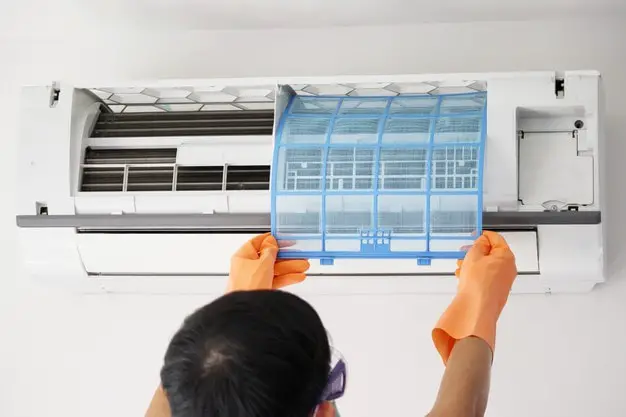
Another factor to consider is keeping cool at night. AC units can be drying, which could affect your airways or your quality of sleep. They can also be noisy inside and outside of your home. Besides the fans, the refrigerant moving between the units can sometimes disturb you or your neighbors.
When and Why Would I Use an Air Conditioner?
These are three scenarios where an air conditioner could be beneficial.
In Hot and Damp Environments
You won’t want to add to the humidity with a swamp cooler if you live somewhere with a damp or wet climate. However, you’ll still have cooling needs. In that case, an air conditioning system is a good option as it’ll give you temperature control without extra moisture.
In Mild or Moderate Climates
AC units are ideal for those in mild or moderate climates willing to invest. The most significant benefit can come from choosing a system that suits your needs. Since many products also offer the option to provide heat, you can control the temperature all year with one purchase and maintenance cost.

When You Need Control
If you can’t handle the heat, you’ll likely want an air conditioner to guarantee that you can set the low temperatures that make you feel comfortable. Since AC units typically have thermostats or remotes, you can set it to the number of degrees you want. Plus, if you have units in different rooms, you can keep it cold in the living room but have a more moderate level for the bedroom.
When to Use a Swamp Cooler vs Air Conditioner
There’s another key difference in your lifestyle that might influence your choice between these two systems. As swamp coolers pull in outside air, you won’t do a lot of harm to the temperature in your home if you leave a window or a door open. On the other hand, air conditioners rely on closed environments to work effectively.
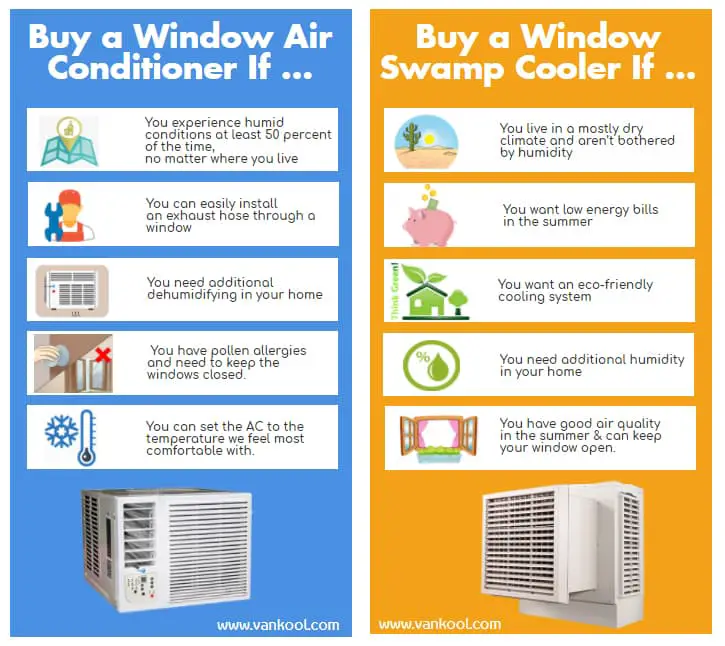
What About Heat Pumps?
A particular type of air conditioner that you might consider is a heat pump. It’s different from many other systems but shares some similarities with AC units. It still uses a refrigerant to cool the air, which sets it apart from swamp coolers.

These units pump air to move it from one location to another. The air passes through a compressor with refrigerant, which either cools or heats the air. The settings can be revered, which means it’s a system you can use all year. The pump element of the product is usually more efficient than the fans and methods used in other types.
Outside sources are used for air extraction, which allows for the exchange of warm or cold air on your property. In this way, heat pumps share a common attribute with evaporative coolers. They’re considered a more energy-efficient product than traditional AC units, as the pump requires less power.
Advantages
The three significant benefits of a heat pump are the life span of the product, the maintenance, and the option to heat and cool. Most heat pumps will run for 40 to 50 years, which shows that they’re reliable methods for keeping your home cool. It’s crucial to note that they also provide heat effectively, which makes it a good system to get temperature control without compromise.
In comparison to swamp coolers and air conditioners, the maintenance for heat pumps is around the same. It’s a fairly low maintenance system; you won’t need to worry about mold or filters, but checking parts and keeping vents clean is key.
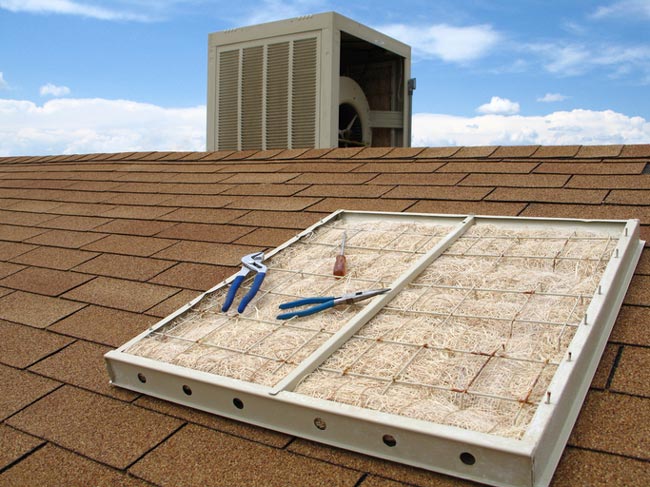
Disadvantages
Although heat pumps could result in savings on your energy bills, they’re quite expensive to purchase and install. As with any system, the insulation of your house and your existing setup can impact the cost. The installation isn’t immediate and will include some disruption.
Bottom Line
Swamp coolers and air conditioners each have their role to play. If you live in a dry climate, are conscious of your impact on the environment, and want to lower your energy bills, the evaporative cooler is a natural choice. On the other hand, those in wet climates who want full control of the temperature will prefer an AC unit to meet their needs.
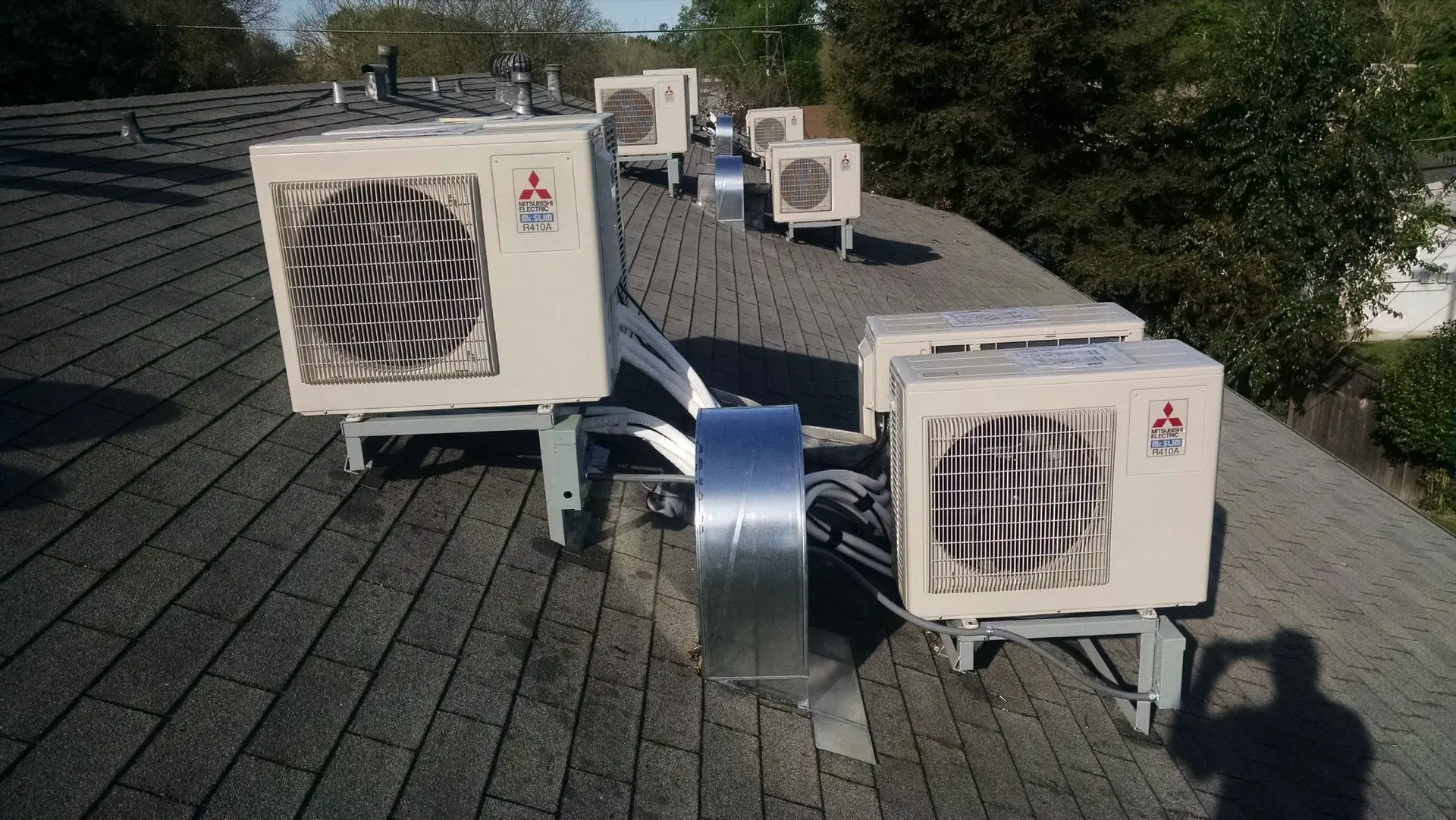
People Also Ask
We’ve compiled some common questions and their answers to help you understand AC units and swamp coolers.
Yes. Since the energy demands of swamp coolers are lower, they don’t cost as much to run.
Potentially. Swamp coolers use water to cool your property, which creates an environment where mold can live. If you live in a wet climate, a swamp cooler won’t be appropriate. If you live in a dry environment, you can prevent issues with mold by keeping your unit clean.
Most swamp coolers can reduce the temperature by around 10 degrees.
Yes. However, the pump brings the water to the pads. If they dry out, the cooling will stop, and you could cause damage to your unit.
No. The systems work in opposite ways. One draws air from outside to cool, while the other uses it from the inside and pushes out any hot air. They would counteract each other and not be effective.
Yes, many swamp coolers use downdraft ducts from a roof installation to bring cool air to different locations.
Swamp coolers are affected by humidity and high temperatures. If there’s moisture in the air and the temperatures are over 100°F, your unit might struggle.
Pumps are designed to run for long periods; you can leave the pump on while you’re using the unit.
Air coolers or swamp coolers typically last between five to eight years, depending on your use.
Yes. Most do a small amount of filtering; some models have more filters to remove allergens.
